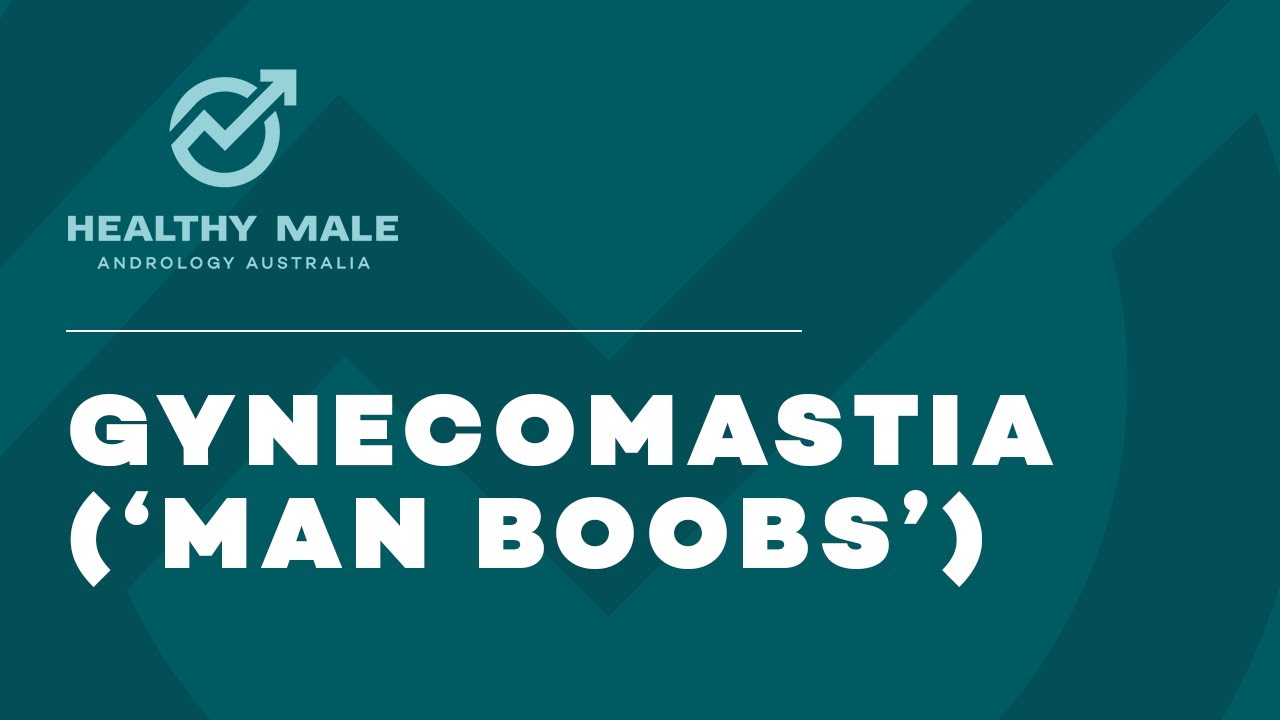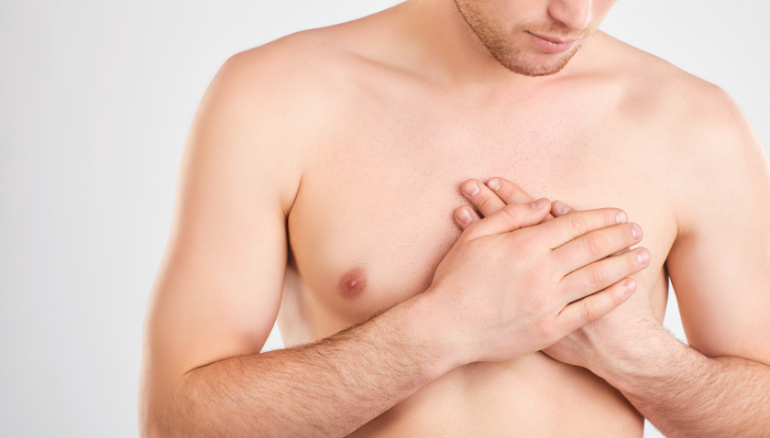Gynecomastia (man boobs)
More resources
What is gynaecomastia?
Gynaecomastia, sometimes referred to as ‘man boobs’, is when male breast tissue grows larger than usual, resulting in a rubbery mass around and behind the nipple. Usually, gynaecomastia occurs on both sides of the chest.
Pseudogynaecomastia can look similar to gynaecomastia but is caused by an increase in the amount of fat in the chest, rather than breast tissue.
Gynaecomastia is common in babies, with up to 9 in 10 newborn baby boys having the condition, usually for about one month after birth.
Around 1 in 2 boys develop gynaecomastia for a while during puberty, and as many as 2 out of 3 men aged over 50 may also have the condition.
Symptoms of gynaecomastia
As well as breast tissue growth, the breast tissue itself can be tender for some people with gynaecomastia.
Causes of gynaecomastia
Gynaecomastia is caused by oestrogens (hormones in the body that promote female characteristics in the body) acting on breast tissue cells. Things that promote the levels or action of oestrogens, or decrease testosterone (a hormone that promotes male characteristics in the body) levels or activity, can cause gynaecomastia.
Gynaecomastia in newborn baby boys can be due to the transfer of oestrogens from their mothers during pregnancy, or an adjustment in the balance of their hormone levels after birth.
Changes in the balance of oestrogens and testosterone during puberty are a common cause of gynaecomastia in adolescent males.
As some men age, their testosterone levels can decline, resulting in greater oestrogen effects.
Although most cases of gynaecomastia are normal variations in anatomy, it can also be caused by:
- Some genetic conditions or diseases
- Some medications or other drugs
- The use of some dietary supplements or traditional or complementary medicines.
For 1 in 4 men with gynaecomastia, the cause is unknown.
Diagnosis of gynaecomastia
Your doctor will usually be able to diagnose gynaecomastia by performing an examination.
Based on your medical history and the results of an examination, your doctor might need to order some tests to find the cause of your gynaecomastia or to rule out other conditions that can alter your breast tissue. These tests might include ultrasound, X-ray or blood tests.
Treatment of gynaecomastia
Since most cases of gynaecomastia are normal variations in your anatomy and are likely to resolve on their own (especially for babies and adolescents), treatment is often unnecessary.
If your gynaecomastia is due to drugs, another health condition or some other cause, your doctor might suggest you make changes to make your gynaecomastia go away.
These changes can include:
- Lifestyle changes
- Switching medications
- Treating an underlying disease.
Surgery is possible to remove breast tissue for cosmetic reasons but is not often required.
If you’re bothered by the appearance of your gynaecomastia, wearing a tight top underneath your shirt can make it less obvious.
Health effects of gynaecomastia
If you have gynaecomastia, it might be a sign of disease or the need for you to make some changes to your lifestyle.
Gynaecomastia doesn’t increase the risk of breast cancer in men (although the prevalence of gynaecomastia and breast cancer is higher in men with Klinefelter syndrome).
Although gynaecomastia is common, some people feel embarrassed or anxious about their chest. It can help to talk to family, friends, and partners, or to a psychologist or counsellor if you’re feeling upset.
What to do about gynaecomastia
Gynaecomastia in babies and adolescents usually goes away on its own, so if it doesn’t, you should ask your doctor about it.
If you notice any changes around or behind your nipples, it’s a good idea to ask your doctor to check it out to make sure it’s nothing to worry about.
Many men with gynaecomastia aren’t bothered by it, but it’s worth asking your doctor to monitor it because any changes might be a sign of something else.
Questions to ask your doctor about gynaecomastia
- How can we be sure the enlargement is gynaecomastia and not something else?
- If I lose weight, will that reduce the enlargement?
- Is it possible I have a health condition that’s causing my gynaecomastia?








